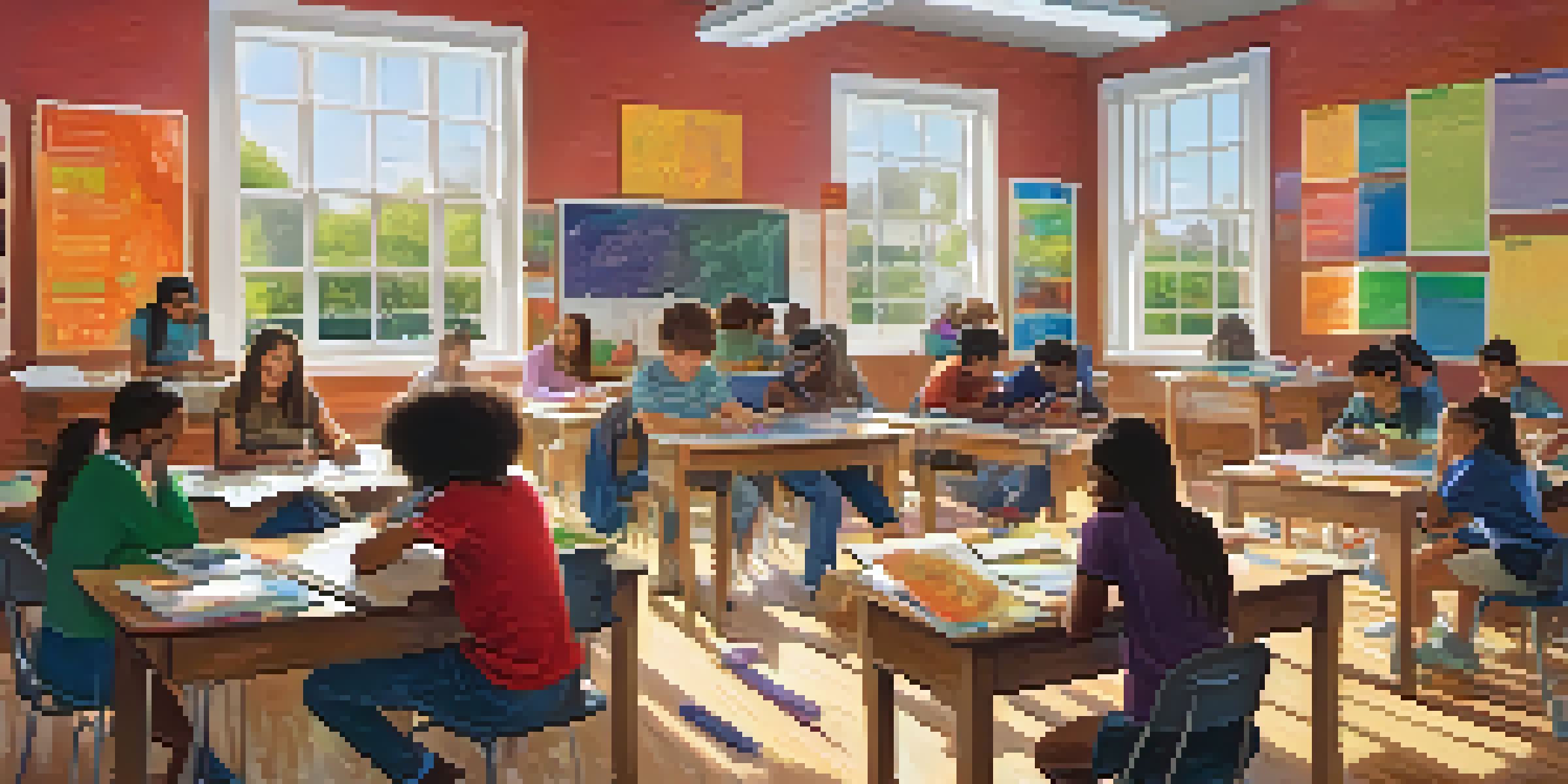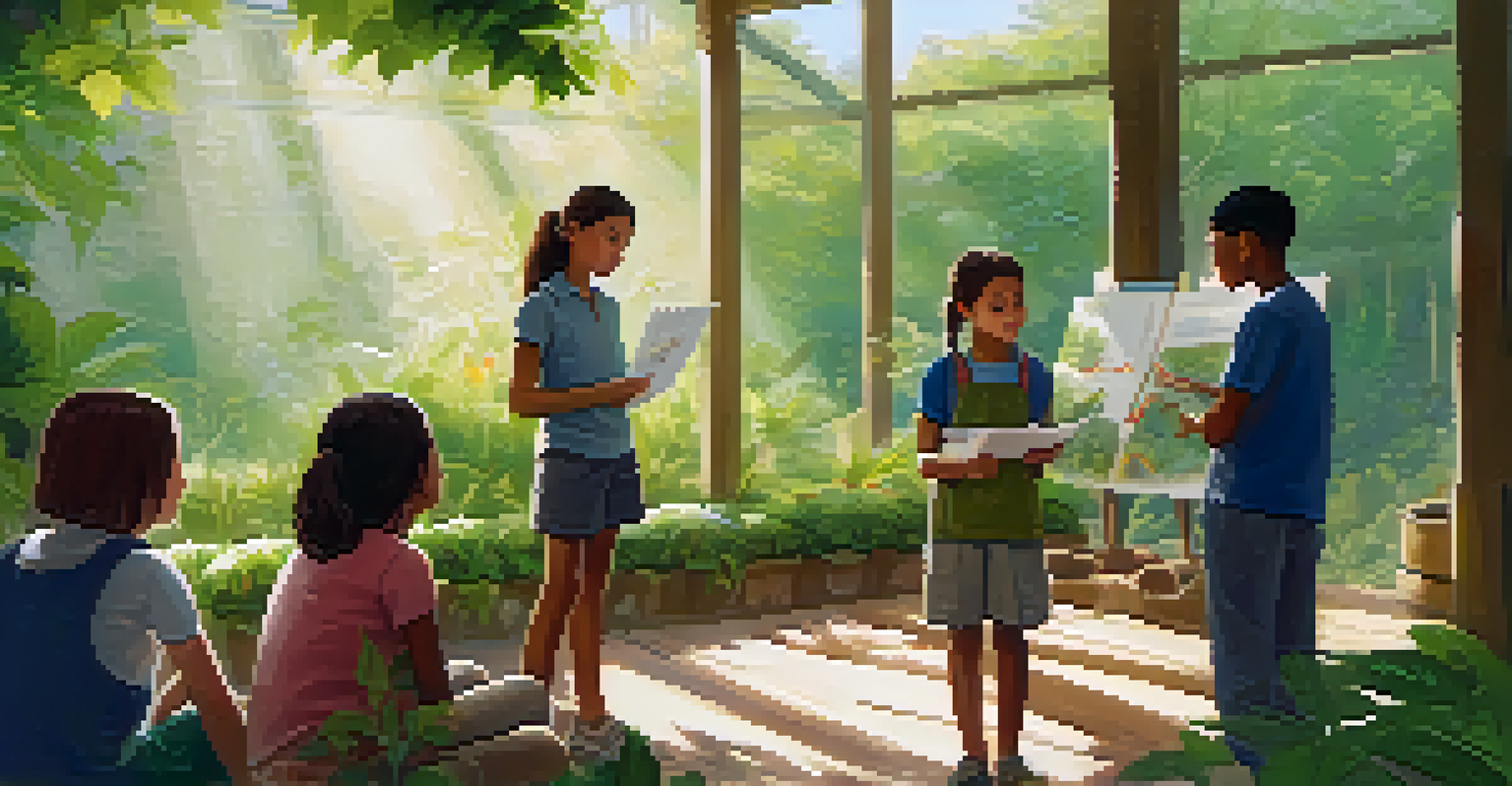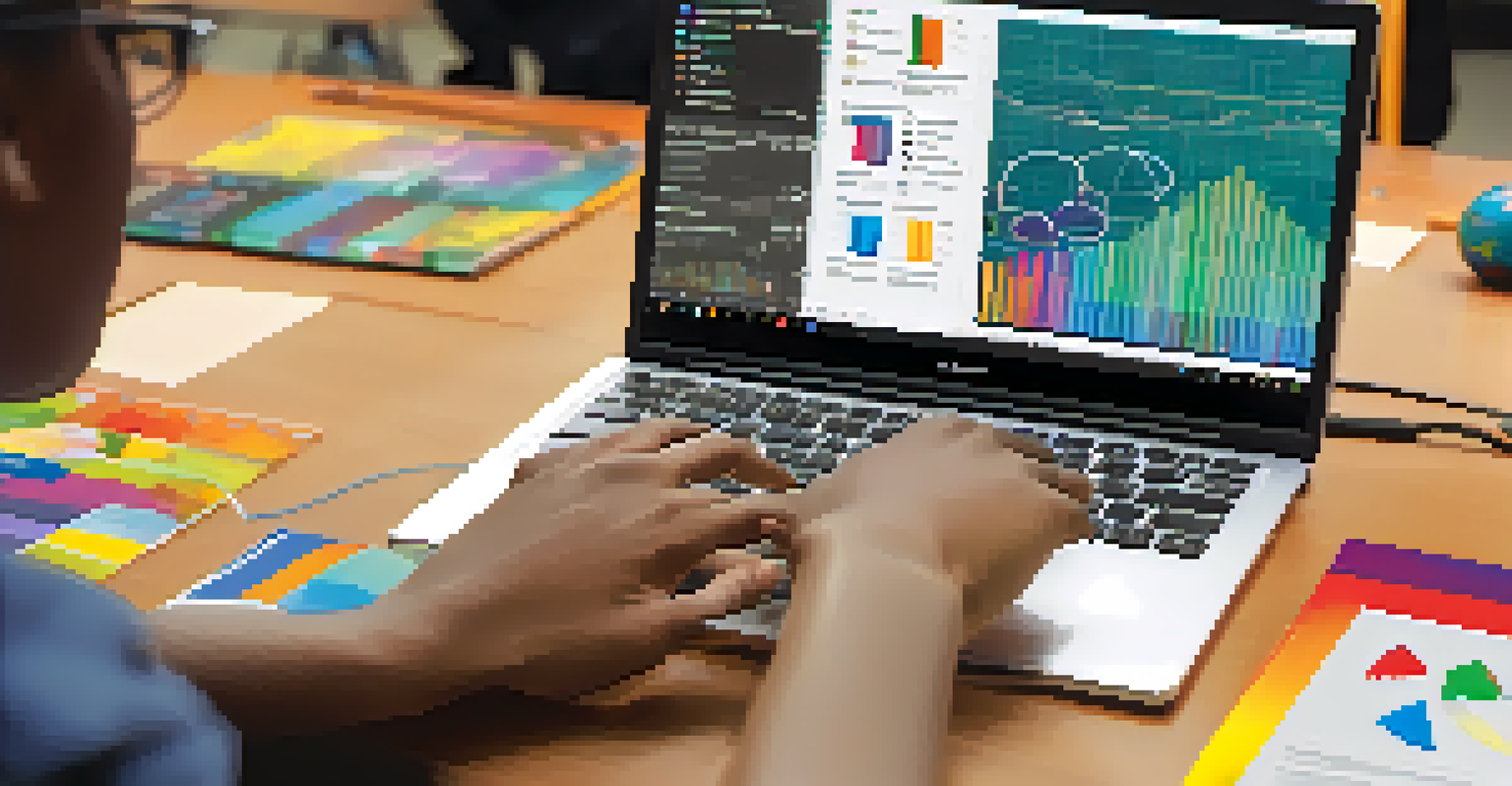Strategies for Teachers to Foster Interdisciplinary Learning

Understanding Interdisciplinary Learning and Its Importance
Interdisciplinary learning blends multiple subjects to create a richer educational experience. This approach not only engages students but also helps them see the connections between different fields. For example, a lesson on climate change can incorporate science, geography, and even art, allowing students to explore the topic from various perspectives.
Education is not the filling of a pail, but the lighting of a fire.
As students tackle real-world problems, they learn to think critically and creatively. This method encourages collaboration and communication, skills that are essential in today’s workforce. By fostering interdisciplinary learning, teachers prepare students to navigate complex issues by drawing on diverse knowledge bases.
Ultimately, this approach makes learning more relevant and engaging. When students understand how their education applies to real-life situations, they become more motivated and invested in their learning journey.
Creating a Collaborative Classroom Environment
A collaborative classroom environment is crucial for interdisciplinary learning. By encouraging teamwork, teachers can help students appreciate different viewpoints and expertise. For instance, group projects that require students to work together across subjects can enhance their understanding and foster a sense of community.

To build this environment, teachers can implement strategies like peer teaching and group discussions. These methods not only promote collaboration but also empower students to take ownership of their learning. When they teach others, they reinforce their own understanding and develop critical social skills.
Interdisciplinary Learning Engages
Blending multiple subjects in education fosters critical thinking and makes learning more relevant to real-world issues.
Moreover, establishing clear expectations and norms for collaboration can help students feel more comfortable working together. By creating a space where students feel safe to share their ideas and learn from each other, teachers can enhance the effectiveness of interdisciplinary education.
Integrating Technology to Enhance Learning Experiences
Technology plays a pivotal role in facilitating interdisciplinary learning. By utilizing digital tools, teachers can create interactive lessons that merge various subjects. For example, using virtual reality can transport students to historical events while integrating geography and social studies.
The only way to do great work is to love what you do.
Additionally, online collaboration platforms enable students to work together on projects, regardless of their physical location. These tools can help them conduct research, share ideas, and present their findings, making learning more dynamic and engaging. Technology also allows teachers to easily access a wealth of resources that can enhance their interdisciplinary lessons.
However, it's essential for teachers to guide students on how to use technology effectively. Teaching them digital literacy skills ensures they can navigate online resources responsibly, preparing them for future academic and professional pursuits.
Designing Interdisciplinary Projects That Inspire Curiosity
One of the best ways to promote interdisciplinary learning is through engaging projects. Teachers can design projects that spark curiosity and encourage students to explore connections between subjects. For instance, a project on renewable energy can incorporate science, math, and technology, allowing students to innovate and problem-solve.
When crafting these projects, it's important to align them with students' interests and real-world issues. This relevance can drive motivation and lead to deeper exploration of the subjects involved. Teachers might even involve students in the project design process, fostering a sense of ownership and accountability.
Collaboration Enhances Understanding
Creating a collaborative classroom environment encourages teamwork, appreciation of different viewpoints, and student ownership of learning.
Moreover, providing opportunities for reflection throughout the project can enhance learning outcomes. Encouraging students to consider what they’ve learned and how different subjects inform their understanding helps solidify the connections between disciplines.
Encouraging Critical Thinking Through Open-Ended Questions
Open-ended questions are a powerful tool for promoting critical thinking in interdisciplinary learning. By asking questions that require more than a simple 'yes' or 'no' answer, teachers encourage students to think deeply and articulate their reasoning. For example, asking, 'How does art influence our understanding of history?' invites students to explore various perspectives.
These types of questions can lead to rich discussions that draw from multiple disciplines. As students share their thoughts, they learn to consider different viewpoints, enhancing their analytical skills. Additionally, facilitating discussions around open-ended questions can help teachers gauge student understanding and adjust their teaching strategies accordingly.
Furthermore, incorporating these questions into assessments can help students demonstrate their ability to integrate knowledge across disciplines. This approach not only promotes critical thinking but also prepares students for complex problem-solving in their futures.
Leveraging Community Resources for Real-World Connections
Community resources can provide invaluable opportunities for interdisciplinary learning. By partnering with local organizations, teachers can create authentic learning experiences that extend beyond the classroom. For example, working with a local environmental group can enrich a unit on ecology while also promoting civic engagement.
Field trips, guest speakers, and community projects allow students to see the relevance of their education in real-world contexts. These experiences can inspire students to take action and apply their learning to address community challenges. Moreover, they can help students develop a sense of belonging and responsibility within their community.
Community Resources Enrich Learning
Leveraging community resources provides authentic learning experiences that connect education to real-world contexts.
By actively involving the community in the learning process, teachers can create a richer, more diverse educational experience. This approach not only benefits students but also strengthens the relationship between schools and their communities.
Assessing Interdisciplinary Learning Outcomes Effectively
Assessing interdisciplinary learning can be challenging, but it's essential for understanding student progress. Teachers can use a variety of assessment methods, such as portfolios, presentations, and reflections, to gauge students' understanding of multiple subjects. These methods allow for a more holistic view of student learning and encourage self-assessment.
Rubrics that incorporate criteria from various disciplines can provide clear expectations for students. By outlining what success looks like across subjects, students can better understand how their work is interconnected. This clarity can also help teachers provide constructive feedback that promotes growth.

Additionally, involving students in the assessment process can empower them to take ownership of their learning. By reflecting on their achievements and areas for improvement, students can develop a growth mindset that fosters lifelong learning.